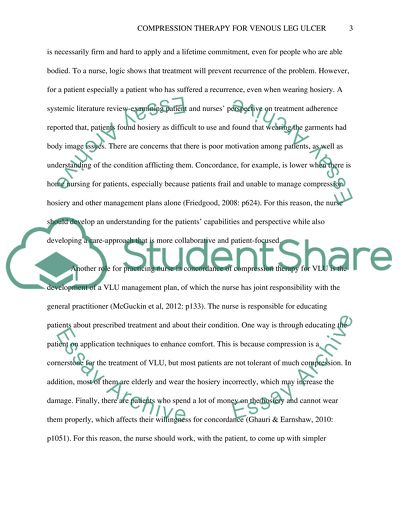Retrieved de https://studentshare.org/nursing/1479889-role-of-nurses-in-patients-concordance-to-compression-therapy-for-venous-leg-ulcer
https://studentshare.org/nursing/1479889-role-of-nurses-in-patients-concordance-to-compression-therapy-for-venous-leg-ulcer.


